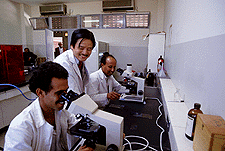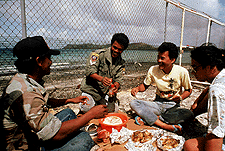Official Development Assistance (ODA)
Japan's ODA Annual Report (Summary) 1994
The 40th Anniversary of Japan's ODA: Accomplishments and Challenges



Photo: JICA (The Japan International Cooperation Agency), OECF (The Overseas Economic Cooperation Fund)
Introduction
Forty years have elapsed since Japan started government-to-government technical cooperation with developing countries in Asia by joining the Colombo Plan in 1954. The total volume of official development assistance (ODA) Japan has given in 1989 and in 1991 through 1993 was the largest in the world and rose to $11.474 billion in 1993. Not only has its ODA had far-reaching impacts on the economic and social development of recipient countries, but it has also lifted the status of Japan as the largest donor country in the world, enabling it to play a leadership role in policy and implementation of development assistance. When one thinks of the fact that Japan was once an aid recipient from the United States and the World Bank during the difficult years after the war, one cannot help but realize the great changes Japan has undergone all those years. During the 40 years to date, Japan's aid to developing countries has come a long way not only in boosting its scale but also in improving its quality, substances, philosophies, and policy planning and execution. The background to this achievement of Japan's ODA lies in the growing strength of Japanese economy, international political and economic environment, and international trends of theories and discussions on development assistance.
This summary of Japan's ODA 1994 reviews the challenges Japan had to come to grips with in the course of providing ODA during the past 40 years, examines its significance in light of the changes occurred in international and domestic environment surrounding ODA, and redefines the role played by ODA in promoting Japan's foreign policy goals. It then discusses the approaches Japan is taking in its ODA policy and its implementation with a view to becoming a leading donor towards the 21st century.
